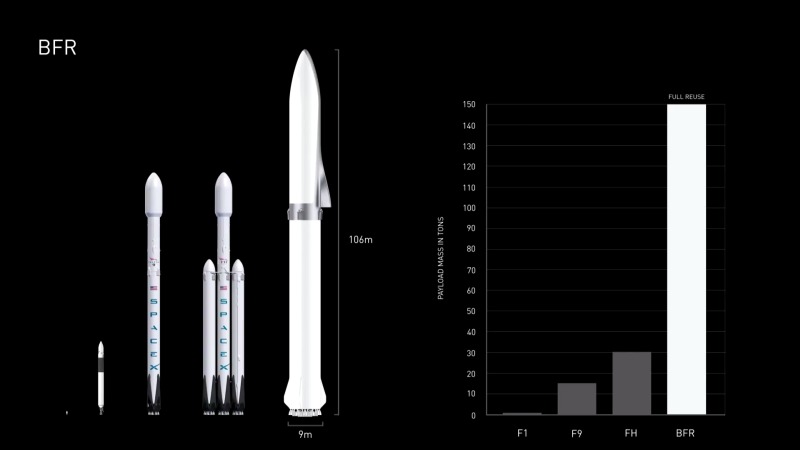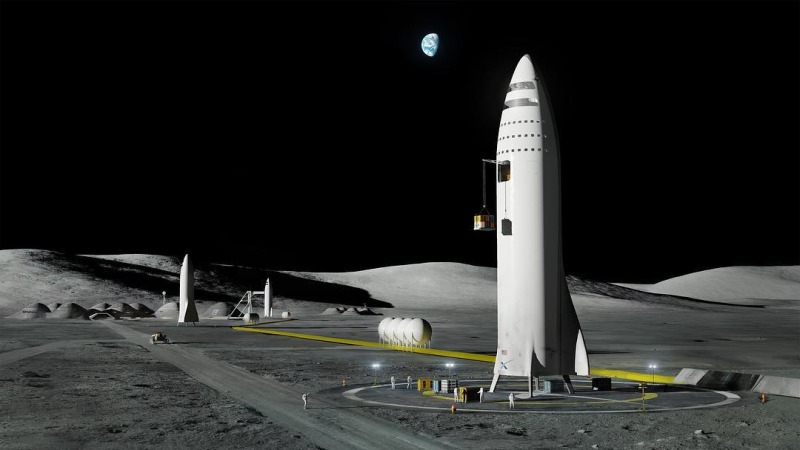
The BFR (yes, it stands for what you think it stands for) is SpaceX’s next rocket after the Falcon Heavy that Musk said the company hopes will launch by the end of this year. Unlike all of its previous rockets, this one will be fully reusable, and capable of refueling in space, which is key for his plans to do things like resupply the ISS, land on the moon, and start sending missions to Mars by 2022. With refueling in space, the BFR can make trips to the Moon’s surface without needing any fuel production there, enabling the creation of “Moon Base Alpha.”

The BFR will have space for 150 tons of cargo, compared to Falcon Heavy’s 30 tons, and will still be fully reusable. Its nose is big enough, Musk said, to launch a mirror that has ten times the surface area of current Hubble telescope without folding it at all, or to go around scooping up out of service satellites. With multiple engines, its built to be as reliable as an airplane, capable of landing even if it loses an engine, unlike the current Falcon 9, and is so precise that it won’t even need landing legs.
Those are sizable promises, but Musk and SpaceX have big plans to match for the BFR, seeing it as a cost-efficient way to change travel on Earth and beyond. The master plan is to build up enough of the company’s previous rockets to store a backlog, then turn its capabilities fully to the BFR.
BFR will take you anywhere on Earth in less than 60 mins https://t.co/HWt9BZ1FI9
— Elon Musk (@elonmusk) September 29, 2017





